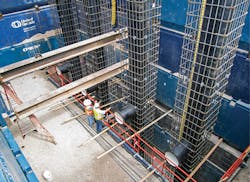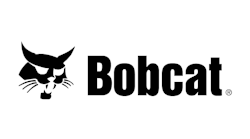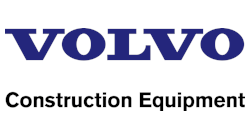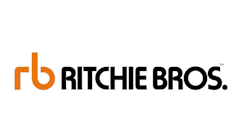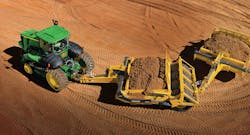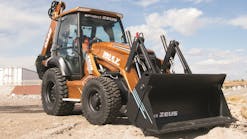Nearly every reporting agency for the US building market has cited impressive surges in construction figures for the first quarter of 2019. Contractors continue to ink record numbers of starting date contracts, and this is good news for manufacturers and providers of shoring and trenching as projects digging underground show no sign of slowdown.
However, while “Contractors know what they want to accomplish, they may not know the best product or method of getting to that end,” says Lynn Cormier, Regional Product Manager for United Rentals of Atlanta, providers of a vast menu of trench and shoring systems.
“And that is where we come in,” he adds.
With more than 47 years in the shoring business, Cormier’s own experience is several paces beyond “expert” when it comes to helping contractors with their shoring needs. With his hands-on background in developing innovative products, he has seen the trenching market come a long way—both in safety and in product efficiency.
“When I first started, things were very different. Guys would get lowered down into a hole with a bucket, and then they were pulled out the same way. That would never happen today, and OSHA is really cracking down because safety for people in trenches is critically important, today more than ever before.”
What this entails, he adds, is looking at the site, finding out what kind of issues could pose a problem in the trenching. This would then dictate the equipment, shoring needs, and other considerations.
“For example, will the dig be crossing any utilities? Is the trench going to run up alongside a building or a railroad track? Or maybe they have to go under a road. We look at all the situations and give them options that would be the best fit. But we stress that lower cost is not always the safest way to do it. Ultimately, it is their decision, but we push them to be safe, and if engineering is needed, we provide consulting help for their installation.”
Cormier adds that other considerations of vital importance are the ground conditions of the specific project.
“This factor has the most effect on the equipment you use. In good ground conditions you could use a steel box, and drop the box into the hole. But when you have loose ground, the soil is not cohesive and then it’s tricky.
In that case, he says, “You need a slide rail or sheet pile to hold the ground better to help protect the workers.”
He stresses that a Soil Report is essential because what you think you may have can prove to be quite a surprise just a few yards away.
“You have to do a test hole, sometimes several, and we give these to the engineer so you can go with the worst-case scenario to be well protected. Engineers need an assumption of what they are up against. But you can take nothing for granted. Even in Austin we’ve actually encountered hard ground on one side of the street and then you cross the street and you run into quicksand!
“Since the ground changes dramatically, the contractor must get reports from geotech resources to know what they are, literally, going to run into.”
Contractors know their goals, but “they also want to know if there is anything new. Slide rail, for example, has come a long way,” he reports.
“When we first started with slide rails, they were a high dollar shoring device that wasn’t well accepted, but as people started using it they saw how safe it was and now everybody uses it.
“Slide rails are a good, quick installation for short-term projects. If, for example, you are doing a bore and you dig a lot of excavation on one side of the road, and then drilling under the road it could be 16 feet wide, maybe 60 feet long, and 20 feet deep, which is very common now. But while a sheeting job for this would take three or four days, you can install slide rails in about one and get started working.”
The main point Cormier stresses is, “When you’re going to do a job, don’t be afraid to ask for help. Our job is to give you the best solution that is safe, and keeps you in compliance with OSHA. We can also give you options, but we need to have your soil reports, understand your objectives, and probably do a ‘job walk’ to really see what the situation is.
“Sometimes guys come in and want to get equipment that will cover every possible worst-case scenario but while this is cautious, it’s almost overkill. One customer chose sheeting, but due to the soil conditions, when he got them down to 15 feet they started splitting, so we said, ‘Look, you can use slide rail and you will be safe and get it done a lot quicker.”
It’s All About What’s Underground
While Jim McRay of Mason, MI-based Efficiency Production says most shoring products are basically the same, when it comes to your individual project, “There is no one-size-fits-all solution.
“The large contractors who are digging in the ground every day as their bread and butter income will usually have a number of shoring products since they routinely encounter varying ground types and unique infrastructure building scenarios. Each job may demand a specific shoring system,” he says.
He says every project is a case study of its own and before a single component is installed, “There are a lot of parameters to consider.
“We look at how the project may be sited: is there a building next to it, or is it a very narrow confined area? Is it next to water, or are you putting a tank next to a major highway—this is not something the contractor can do by themselves—they need an engineer to analyze the situation.
“Some of these non-traditional situations, like installing one foot from a building we have to get the engineers involved to help design what is needed. Then there’s the soil, another major consideration.”
McRay adds that when selling product, “Every manufacturer is pretty much the same, steel or aluminum walls kept open with spreader pipes. But we tell customers that the innovations we’ve come up with in the last 50 years, plus our superior customer service, is a critical difference.”
He describes how in the last 10 years, shackles used on projects are typically connected to a chain or rope and then to an excavator bucket. They are threaded and then screwed closed.
“Except when you are shackling a piece of slide rail—that will need to be unscrewed way above your head, definitely not an ideal process from a safety perspective.”
“So we developed a ground release shackle that eliminates that risk so it releases from the equipment by a rope connected to a spring-loaded shackle. What happens then is when you yank on that rope it opens up and you no longer have to climb up the ladder, or risk overhead work. This is a major innovation in the industry whose design we have patented.”
Soils are the determining factor to the type of equipment to be used, and McRay says that clay, for example, “exerts a lot of pressure and when the trench is open the soil is super heavy against the trench box.”
He says that steel trench boxes are the most popular in this situation and these are built to withstand those pressures.
“All of them come with a professional engineered stamp that identifies the tabulated data that it is suited for.”
The tabulated data classification system, he explains, includes soil designated as types A, B, and C as specified by the US Army Corps of Engineers (USACE).
“Soil type A, which would include solid rock, exerts less pressure than B, which is a different category of soil having increased pressure, such as mixed granular and sands. Then type C is a super pressure soil, clays, and dense mix. But what is also critical is that the deeper you go, the ratings change.
“So, let’s say you are using an eight-foot-deep, 16-foot-long box, the data will tell you how deep you can go with it. And based on that, as long as the contractor stays in those data ranges, they will be safe.”
“Those are a few of the limiting factors in choosing and placing equipment. First, you need the soil information, and then, what is the capacity of your excavator.”
Then there is the consideration of pipe size, he says. If the box is longer than the pipe, “You need to have cross brace and have the trench wide enough work in. And when you dig a trench you have to dig it six inches wider on each side so you can maneuver it in place.
“Our founder was the first to innovate the market with spreads and a system to pin them to the collars. The steel walls have collars on them,” he explains, “and there is a round nub end on the inside spreader—pipes easily fit over those.”
McRay also says that the OSHA safety system classifies the type of protective shoring system to be used, based on specific soil classifications.
“The first type is sloping, which is the absence of any type of trench or shoring; you just slope your banks so they don’t cave in. The second is shielding which, by definition, is any type of system that protects workers on the inside. But we tell people if you use a shield, go with the tabulated data, instead of calculating what the collapsing potential is on the soil rating.
“Then the third choice of protective system the agency describes is shoring, which is a system that has a combination of devices that prevent the walls from collapsing.”
Consulting with the Efficiency team is essential, regardless of project. McCray says there are staff people who have been using the equipment for decades, “and they are experts and can teach your crew how to install the system.
“If you’re doing a slide rail system, our main guys deal with the slide rails. In the case of a special infrastructure improvement next to an Interstate, you are limited to sheeting or using a slide rail, but we have two special engineers with DOT expertise who will help you install the most cost-effective and safe system.”
Finally, McRay adds that their latest innovation is an aluminum box system that goes into an octagon, “which is a super helpful configuration whose box shape shortens the footprint of the dig.”
A Good and Safe Experience
Since October of 2018, the number of fatalities in the shoring industry has “doubled, with seven fatalities in just the last six weeks,” says Greg Shreenan, senior staff educator for California-based Trench Shoring Company’s Competent Person training programs.
As a manufacturer of trench shoring equipment that includes a wide range of shields, shores, slide rails, and trench boxes, “We’re less focused to the buyer market, but rather a rental market with 10 branch sites: nine in California and one Nevada.”
“But our real strong suit beyond what we supply for your construction project is how we prepare you to understand the rules and regulations that will make you compliant with OSHA.”
Shreenan explains that since the increase of fatalities, OSHA added a mandate of additional compliance in October of 2018.
“This new policy is a federal addendum to OSHA’s existing policies, and will tighten enforcement to identify hazards and risks that might cause injury or death on the job.”
“Most contractors have a good sense of safety, but with this regulation, there is going to be more intense looking over your shoulder to ensure you are doing it right.”
“To that end, we provide the instruction so that our customers can have the knowledge resources to install your trench shoring equipment in compliance with OSHA, and that each project has a trained Competent Person on the job to monitor these requirements, and conduct trench and excavation inspections,” explains Shreenan.
He adds that there are a lot of excavation companies where people are not very knowledgeable about either the regulations or how to acquire the requisite awareness. In areas where there is typically scant or erratic inspection, this increases the likelihood of lower adherence to regulations.
The regulations, Shreenan says, “are the only thing that really protects people. While people may not like what could be perceived as added work, these policies force us to get away from the ‘this-is-always-how-we’ve-done-it’ approach, and do things based on science and engineering, not just opinion.”
The educational program Shreenan operates at Trench Shoring Company is all-consuming and he reports more than 2,000 people went through his classroom last year. The purpose is to train workers who can become the Competent Person (CP) on the job once they have finished the training classes and have been authorized by their employer.
“However, it is essential that this individual is well trained, not just possessing a title in name only. They must demonstrate compliance knowledge in all required aspects. If in fact they are not up to the task and someone is injured or dies on the job, they can actually be held personally responsible in criminal court for failing to uphold the required standards.”
For contractors seeking to get up to speed with these policies, Shreenan has good advice.
“Before engaging in any equipment rental or purchase and starting any job, ask for a shoring representative to come out and have the conversation with them about the project they intend on doing. Ask them what they offer in training and knowledge—is there access to civil and structural engineers who can explain every aspect?
“Safety becomes a part of every job—when looked at from the beginning, this often dictates how the plan of the project will proceed.”
Shreenan describes a typical encounter with a prospective customer who, for example, is a sewer-stormwater underground company.
“This is a deep, wet underground so we will meet with them and find out what their experience level is and the type of equipment they have.
“Once we understand their capabilities, we can talk about strategy and what we have available to them based on their needs and capabilities.
Shreenan says that Trench Shoring Company, along with all of the other major Shoring rental houses, provides not just equipment but real knowledge that “comes from years of experience working in this business helping contractors to be safe and compliant with the OSHA excavation standard.”
“A good relationship with a knowledgeable shoring consultant and proper training will always prove to be your best way to ensure you understand OSHA compliance, and you have the best ideas of how you can keep it safe out there on the job.”
